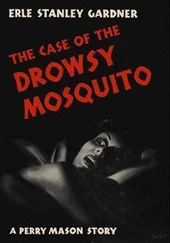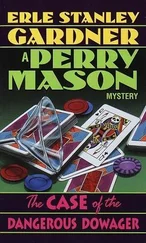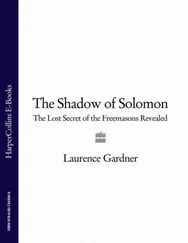Daniel Gardner - The Science of Fear
Здесь есть возможность читать онлайн «Daniel Gardner - The Science of Fear» весь текст электронной книги совершенно бесплатно (целиком полную версию без сокращений). В некоторых случаях можно слушать аудио, скачать через торрент в формате fb2 и присутствует краткое содержание. ISBN: , Издательство: Penguin Group (USA) Incorporated, Жанр: Психология, Политика, Прочая научная литература, на английском языке. Описание произведения, (предисловие) а так же отзывы посетителей доступны на портале библиотеки ЛибКат.
- Название:The Science of Fear
- Автор:
- Издательство:Penguin Group (USA) Incorporated
- Жанр:
- Год:неизвестен
- ISBN:9780525950622
- Рейтинг книги:3 / 5. Голосов: 1
-
Избранное:Добавить в избранное
- Отзывы:
-
Ваша оценка:
- 60
- 1
- 2
- 3
- 4
- 5
The Science of Fear: краткое содержание, описание и аннотация
Предлагаем к чтению аннотацию, описание, краткое содержание или предисловие (зависит от того, что написал сам автор книги «The Science of Fear»). Если вы не нашли необходимую информацию о книге — напишите в комментариях, мы постараемся отыскать её.
The Science of Fear — читать онлайн бесплатно полную книгу (весь текст) целиком
Ниже представлен текст книги, разбитый по страницам. Система сохранения места последней прочитанной страницы, позволяет с удобством читать онлайн бесплатно книгу «The Science of Fear», без необходимости каждый раз заново искать на чём Вы остановились. Поставьте закладку, и сможете в любой момент перейти на страницу, на которой закончили чтение.
Интервал:
Закладка:
180: “. . . can be distracted by dramatic stories of no real consequence.” A further example: In 1996 and 1997, “flying truck tires” became a major issue in the province of Ontario thanks to a classic feedback loop. Two tragic incidents in which loose tires struck and killed motorists got considerable media attention. The issue became political. Reporting proliferated and even trivial incidents in which no one was endangered made the news. It seemed the roads were in chaos. New safety regulations were passed and, just as quickly as it appeared, the crisis vanished.
So, had the regulations put out a real fire? No. The ministry of transportation didn’t have a comprehensive incident-collection system in place prior to the crisis, but its partial figures showed there were 18 “wheels-off ” incidents and two deaths in 1995, the year the issue started emerge. Given the millions of vehicles on the road, those numbers are tiny. Then, in 1996, the government started to gather better data. The 1996 figures show 41 incidents, and another two deaths. In 1997, there were 215 incidents and no deaths. In 1998, there were 99 incidents. The following year, there were 79, then 87. In 2001, there were 65 incidents and two people were killed. In 2002, there were 66 incidents. In 2003, there were 75 incidents and another person was killed.
Before the panic, tires came loose occasionally and there was a tiny risk to motorists. The same was true during the crisis and afterward. All that changed was the appearance and disappearance of the feedback loop.
CHAPTER NINE
187: “. . . so small it can be treated as if it were zero.” The term de minimis comes from the legal maxim de minimis non curat lex —the law does not concern itself with trifles.
189: “. . . saying they followed ‘very closely’ (49 percent) or ‘fairly closely’ (30 percent).” Smart was discovered alive in March 2003. People magazine named her one of the “50 Most Beautiful People of 2005.”
190: “This astonishingly good news went almost completely unreported.” See Shannon Catalano, Intimate Partner Violence in the United States, U.S. Bureau of Justice Statistics.
190: “. . . debate declined and disappeared virtually unnoticed.” In 1999 and 2000, a panic about “home invasions” swept Toronto and Vancouver after numerous incidents in which criminals burst into homes, brutalized the occupants, and grabbed whatever they could take. In one attack, an 85-year-old woman was beaten so badly she later died. Story followed story and it became common knowledge that home invasions were a terrible new threat that was rapidly getting worse. Few reporters mentioned that there was no definition of “home invasion” and therefore no statistics on the crime. They also didn’t mention that most recognized categories of crime were falling rapidly, which made it hard to believe that this one form of violent crime was soaring. No matter. Everyone knew it was true and in that inflamed atmosphere a bill stiffening sentences was inevitable. It appeared and passed. And with that, the whole issue faded. But then in 2002, Statistics Canada issued a report that used two different definitions of “home invasion” and used those to track the crime using existing data. Under the first definition, the rate of “home invasions” had dipped slightly between 1995 and 2000; under the second definition, it had fallen 22 percent. The report was almost completely ignored by the media.
191: “. . . in newspapers, wrote criminologist Robert Reiner.” See Robert Reiner, Media-Made Criminality: The Representation of Crime in the Mass Media, in The Oxford Handbook of Criminology , Oxford University Press, 2007.
194: " ’... rate that was at least six times higher than the actual rate.’ ” See Julian Roberts and Loretta J. Stalans, Public Opinion, Crime and Criminal Justice and Julian Roberts and Mike Hough, Understanding Public Attitudes to Criminal Justice .
203: “. . . the prison population soared from 400,000 in 1980 to 2.1 million by 2000.” The latter half of that explosion coincided with a major decline in crime, and people on both sides of the political spectrum concluded that stuffing prisons to the rafters is an effective way to reduce crime. Most criminologists disagree. In The Great American Crime Decline —the most exhaustive look at the causes of the crime drop of the 1990s—University of California criminologist Franklin Zimring noted that Canada had not followed the American approach in the 1980s and 1990s and, as a result, a canyon opened between the two countries’ incarceration rates: In 1980, the United States imprisoned people at double the rate Canada did; in 2000, the American incarceration rate was six times higher than the Canadian rate. Despite this, Canada’s crime trends over that entire period were remarkably similar to American trends. In the 1990s, Zimring writes, Canada experienced a drop in crime in the 1990s that “almost perfectly matched the timing of the United States decline and [was] about 70 percent of its relative magnitude.” Zimring rather understatedly concludes this fact is “a challenge” to the conventional view that American politicians not only won elections with promises to “get tough” but won the war on crime, too.
204: “. . . to commit another crime after release than other sorts of criminals.” See, for example, Recidivism Released from Prison in 1994, U.S. Bureau of Justice Statistics, 2003.
204: “. . . less frightening than that unadorned number.” See Online Victimization of Youth: Five Years Later, The Crimes Against Children Research Center, University of New Hampshire, 2006.
206: “. . . civil servants handling the file. ‘It’s politics,’ he told them.” This was personally communicated to the author by one of the civil servants present.
208: “. . . the research does not mean what people naturally assume it means— that one in five children on the Internet have been contacted by pedophiles. ” It’s hard to believe these agencies are not aware that the statistic they disseminate is leading people to a false and frightening conclusion. A quick Google search turns up countless blogs and Web sites where the figure is cited as proof of the threat posed by pedophiles. It appeared in the same context in an article by journalist Caitlin Flanagan in the July/August 2007 issue of The Atlantic Monthly . And John Walsh cited the figure as proof of the pedophile menace in an interview on CNN: “The Justice Department says that one in five children receive a sexual solicitation over the Internet. And I think all Americans have seen the Dateline stings with all the different type of pedophiles, doctors, rabbis, priests showing up to have sex with children.” As for UNICEF, when I asked a spokesperson for the source behind the agency’s statement, he cited the University of New Hampshire study and provided me with a Web link to it—even though anyone who actually looked at the document would see that it does not say what UNICEF says it does.
216: “. . . the homicide rates today are among the lowest in eight centuries.” Property crime is trickier to track simply because with murders there is usually a corpse and a big fuss, but historians such as James Sharpe of the University of York have investigated the possibility that violent crime was merely transformed into property crime and they are confident that, no, that did not happen. In the seventeenth century, as homicide was plummeting in England, property offenses fell along with it, Mr. Sharpe has concluded. See Manuel Eisner, Long-Term Historical Trends in Violent Crime, in Crime and Justice: A Review of Research, Volume 30 , University of Chicago Press, Chicago, IL, 2003.
Читать дальшеИнтервал:
Закладка:
Похожие книги на «The Science of Fear»
Представляем Вашему вниманию похожие книги на «The Science of Fear» списком для выбора. Мы отобрали схожую по названию и смыслу литературу в надежде предоставить читателям больше вариантов отыскать новые, интересные, ещё непрочитанные произведения.
Обсуждение, отзывы о книге «The Science of Fear» и просто собственные мнения читателей. Оставьте ваши комментарии, напишите, что Вы думаете о произведении, его смысле или главных героях. Укажите что конкретно понравилось, а что нет, и почему Вы так считаете.












